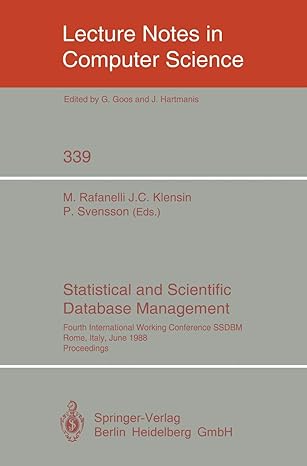Question
Can you convert this R code to Python code? # Clear workspace. rm(list = ls()) # Initialize file paths and names work.paths
Can you convert this R code to Python code?
# Clear workspace.
rm(list = ls())
# Initialize file paths and names work.paths <- c("C:/Users/user/Desktop/Working, CS/") work.path <- work.paths[location] trajectory.file <- paste(work.path, "Simple trajectory data.txt", sep="")
# Define utility functions.
text.out <- function(msg, textfile, first=FALSE) { write(msg, textfile, ncolumns=1, append=!first) }
# Initialize character movement variables.
position <- c(0, 60) # Location in game world; 2D vector; meters velocity <- c(8, 2) # Rate of change of position; 2D vector; meters per second linear <- c(0, 1) # Rate of change of velocity; 2D vector; meters per second per second orientation <- 0 # Direction character is facing; numeric; radians rotation <- 0 # Rate of change of orientation; numeric; radians per second angular <- 0.00 # Rate of change of rotation; numeric; radians per second per second
# Initialize movement parameters.
Time <- 0 # Current simulated time delta.time <- 0.50 # Duration of time step physics <- FALSE # TRUE=HS physics, FALSE=Newton-Euler-1 integration (p. 47) align <- FALSE # TRUE=align character orientation with velocity, FALSE=do not align
# Write initial position and movement variables to trajectory file.
initial <- paste(Time, position[1], position[2], velocity[1], velocity[2], linear[1], linear[2], orientation, rotation, angular, sep=",") text.out(initial, trajectory.file, first=TRUE)
update.HS <- function(position, velocity, linear, orientation, rotation, angular) {
# Update position and orientation.
half.t.sq <- 0.5 * delta.time * delta.time position <- position + (velocity * delta.time) + (linear * half.t.sq) orientation <- orientation + (rotation * delta.time) + (angular * half.t.sq)
# Update velocity and rotation.
velocity <- velocity + (linear * delta.time) rotation <- rotation + (angular * delta.time)
updated <- list(position, velocity, orientation, rotation) return(updated) }
update.NE1 <- function(position, velocity, linear, orientation, rotation, angular) {
# Update position and orientation.
position <- position + (velocity * delta.time) orientation <- orientation + (rotation * delta.time)
# Update velocity and rotation.
velocity <- velocity + (linear * delta.time) rotation <- rotation + (angular * delta.time)
updated <- list(position, velocity, orientation, rotation) return(updated) }
# Calculate trajectory, time step by time step.
while (Time < 100) { Time <- Time + delta.time
# Update character movement variables.
if (physics) { updated <- update.HS(position, velocity, linear, orientation, rotation, angular) # High School physics } else { updated <- update.NE1(position, velocity, linear, orientation, rotation, angular) # Newton-Euler-1 integration }
position <- updated[[1]] velocity <- updated[[2]] orientation <- updated[[3]] rotation <- updated[[4]]
if (align) { orientation <- atan2(velocity[2], velocity[1]) }
# Set linear and angular acceleration. # This is a surrogate steering behavior, for testing only.
linear <- c(position[1] / -100 * delta.time, position[2] / -100 * delta.time) * c(9, 3) angular <- (50 - Time) * 0.0001
# Write updated position and movement variables to trajectory file.
updated <- paste(Time, position[1], position[2], velocity[1], velocity[2], linear[1], linear[2], orientation, rotation, angular, sep=",") text.out(updated, trajectory.file) }
# End of program
Step by Step Solution
There are 3 Steps involved in it
Step: 1

Get Instant Access to Expert-Tailored Solutions
See step-by-step solutions with expert insights and AI powered tools for academic success
Step: 2

Step: 3

Ace Your Homework with AI
Get the answers you need in no time with our AI-driven, step-by-step assistance
Get Started


